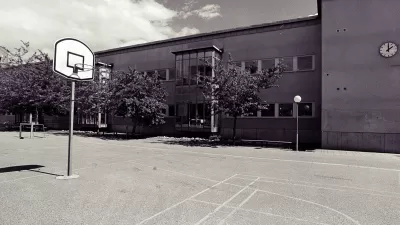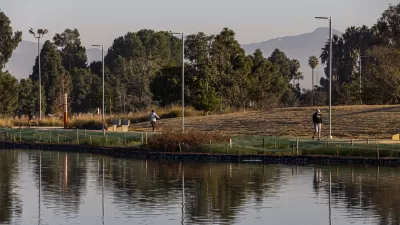While standardized metrics for determining the number of and place for city parks cannot replace more fine grain analysis, they can be useful tools. Park planner Clement Lau writes about five park-need metrics, including a couple of the newest.

Standardized park planning metrics that prescribe, for example, x acres of park per 1,000 residents, have a bad rap. However, planners cannot rely solely on subjective input. Standardized metrics are an invaluable tool for planners when not blindly implemented. Park planner Clement Lau reviews five valuable metrics, including a couple of the newest, which work best when integrated with other metrics and more fine grain analysis. Excerpts of his review are as follows:
Park Acres per 1,000 Residents
This is a commonly used indicator of the amount of parkland available in a given area.
. . .
Park Accessibility
This metric is evaluated by using a Geographic Information System (GIS) and Census data to determine the percentage of households that are within walking distance from a park.
. . .
Park Pressure
Park pressure is a lesser known, but helpful metric that refers to the potential demand on a park, assuming that the residents in a “parkshed” use the park closest to them.
. . .
Quantity and Variety of Park Amenities
It should be obvious that not all parks are created equal and that the quantity and variety of amenities vary widely.
. . .
Condition of Park Amenities
The condition or quality of park amenities is a key measure of park adequacy. . . . The condition of this infrastructure and park amenities may be rated as “Good,” “Fair,” or “Poor” or in any other way that allows a city to determine its deferred maintenance and park improvement needs in terms of costs.
Lau goes on to explain in more detail how each of these metrics should be used and integrated with other factors.
FULL STORY: How Should Park Needs be Measured?

Alabama: Trump Terminates Settlements for Black Communities Harmed By Raw Sewage
Trump deemed the landmark civil rights agreement “illegal DEI and environmental justice policy.”

Study: Maui’s Plan to Convert Vacation Rentals to Long-Term Housing Could Cause Nearly $1 Billion Economic Loss
The plan would reduce visitor accommodation by 25% resulting in 1,900 jobs lost.

Why Should We Subsidize Public Transportation?
Many public transit agencies face financial stress due to rising costs, declining fare revenue, and declining subsidies. Transit advocates must provide a strong business case for increasing public transit funding.

Paris Bike Boom Leads to Steep Drop in Air Pollution
The French city’s air quality has improved dramatically in the past 20 years, coinciding with a growth in cycling.

Why Housing Costs More to Build in California Than in Texas
Hard costs like labor and materials combined with ‘soft’ costs such as permitting make building in the San Francisco Bay Area almost three times as costly as in Texas cities.

San Diego County Sees a Rise in Urban Coyotes
San Diego County experiences a rise in urban coyotes, as sightings become prevalent throughout its urban neighbourhoods and surrounding areas.
Urban Design for Planners 1: Software Tools
This six-course series explores essential urban design concepts using open source software and equips planners with the tools they need to participate fully in the urban design process.
Planning for Universal Design
Learn the tools for implementing Universal Design in planning regulations.
Smith Gee Studio
Alamo Area Metropolitan Planning Organization
City of Santa Clarita
Institute for Housing and Urban Development Studies (IHS)
City of Grandview
Harvard GSD Executive Education
Toledo-Lucas County Plan Commissions
Salt Lake City
NYU Wagner Graduate School of Public Service





























